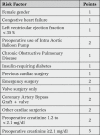Fenoldopam to prevent renal replacement therapy after cardiac surgery. Design of the FENO-HSR study
- PMID: 23440680
- PMCID: PMC3484615
Fenoldopam to prevent renal replacement therapy after cardiac surgery. Design of the FENO-HSR study
Abstract
Introduction: Acute kidney injury requiring renal replacement therapy is a serious complication following cardiac surgery associated with poor clinical outcomes. Until now no drug showed nephroprotective effects. Fenoldopam is a dopamine-1 receptor agonist which seems to be effective in improving postoperative renal function. The aim of this paper is to describe the design of the FENO-HSR study, planned to assess the effect of a continuous infusion of fenoldopam in reducing the need for renal replacement therapy in patients with acute kidney injury after cardiac surgery.
Methods: We're performing a double blind, placebo-controlled multicentre randomized trial in over 20 Italian hospitals. Patients who develop acute renal failure defined as R of RIFLE score following cardiac surgery are randomized to receive a 96-hours continuous infusion of either fenoldopam (0.025-0.3 µg/kg/min) or placebo.
Results: The primary endpoint will be the rate of renal replacement therapy. Secondary endpoints will be: mortality, time on mechanical ventilation, length of intensive care unit and hospital stay, peak serum creatinine and the rate of acute renal failure (following the RIFLE score).
Conclusions: This trial is planned to assess if fenoldopam could improve relevant outcomes in patients undergoing cardiac surgery who develop acute renal dysfunction. Results of this double-blind randomized trial could provide important insights to improve the management strategy of patients at high risk for postoperative acute kidney injury.
Keywords: acute renal failure; anesthesia; cardiac surgery; cardiac surgical procedures; fenoldopam; renal replacement therapy.
Figures





References
-
- Landoni G, Roberti A, Boroli F. et al. Mitral valve surgery and acute renal failure. Eur J Anaesthesiol. 2007;24:100–101. - PubMed
-
- Landoni G, Bove T, Crivellari M. et al. Acute renal failure after isolated CABG surgery: six years of experience. Minerva Anestesiol. 2007;73:559–565. - PubMed
-
- Bove T, Calabrò MG, Landoni G. et al. The incidence and risk of acute renal failure after cardiac surgery. J Cardiothorac Vasc Anesth. 2004;18:442–445. - PubMed
-
- Landoni G, Zangrillo A, Franco A. et al. Long-term outcome of patients who require renal replacement therapy after cardiac surgery. Eur J Anaesthesiol. 2006;23:17–22. - PubMed
-
- Schetz M, Bove T, Morelli A. et al. Prevention of cardiac surgery-associated acute kidney injury. Int J Artif Organs. 2008;31:179–189. - PubMed
LinkOut - more resources
Full Text Sources
